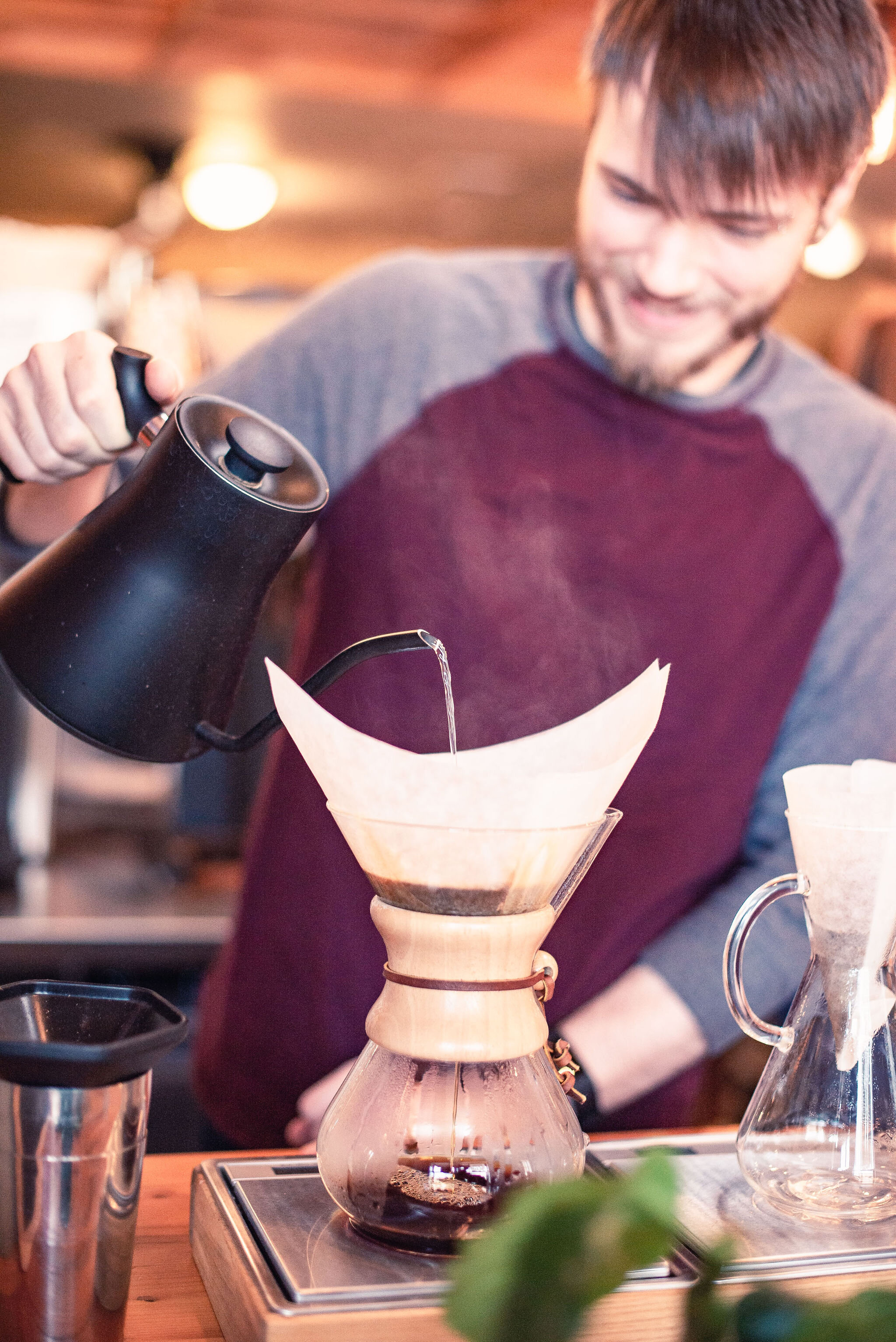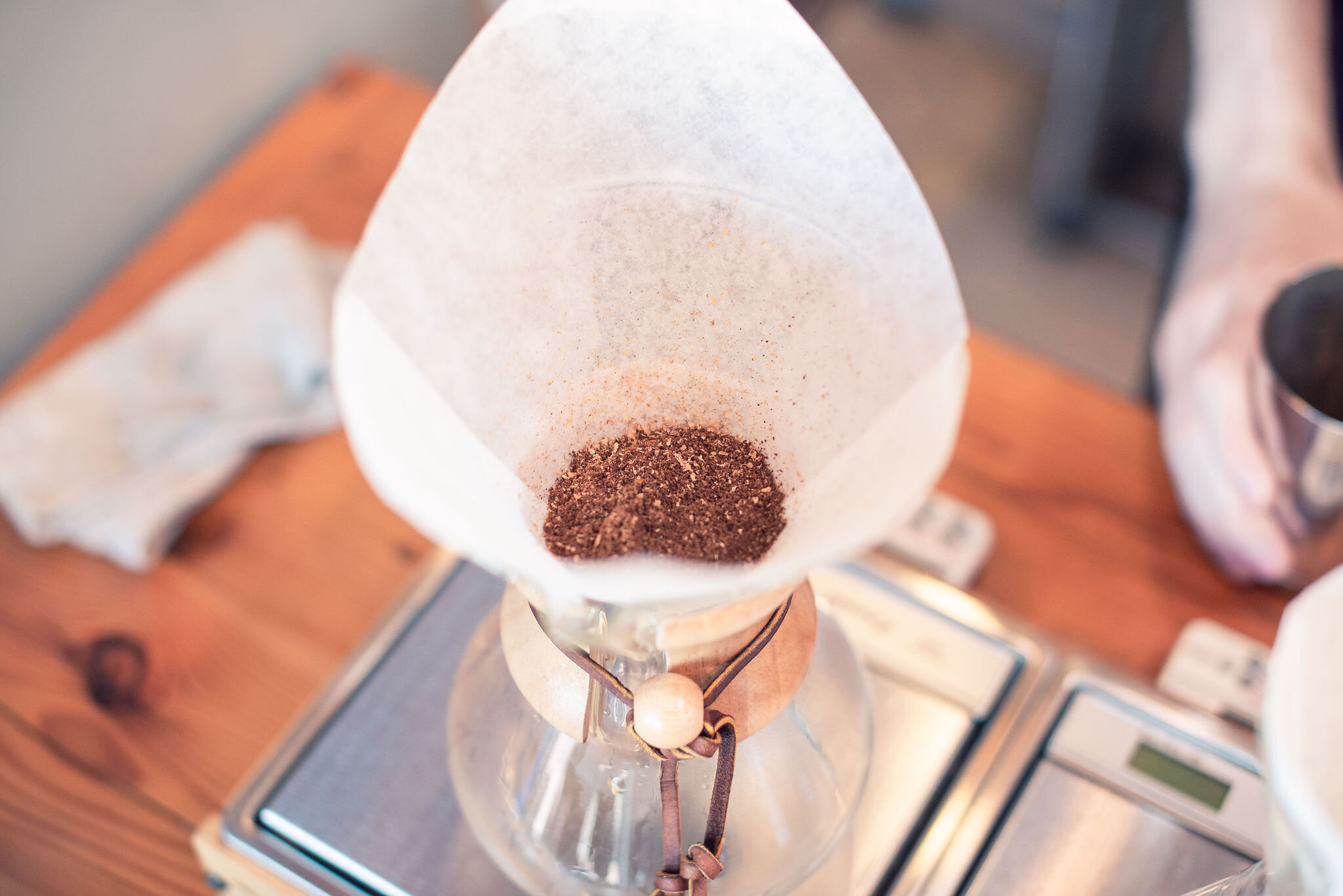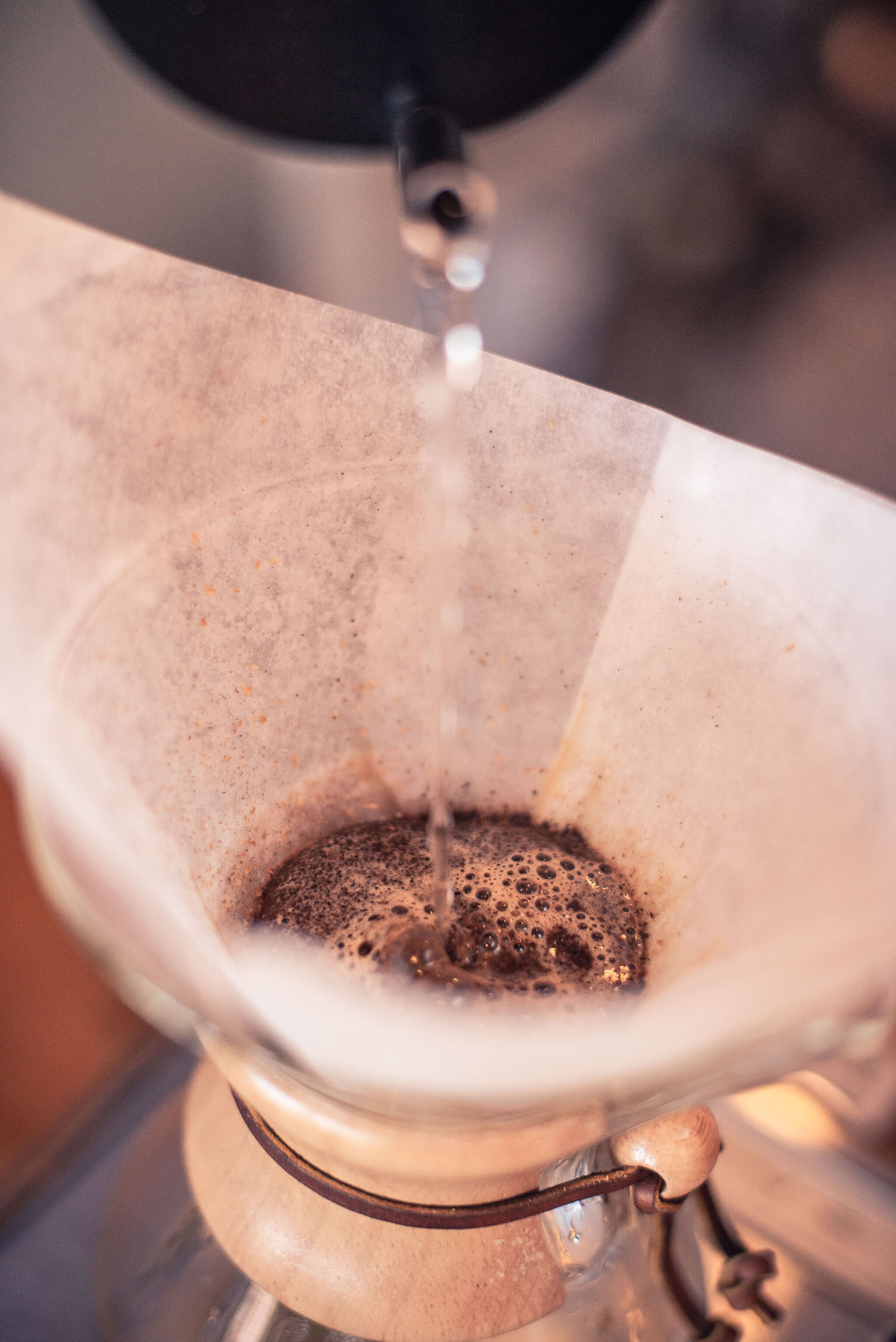Brew Guide, revisited: Chemex Pourover
The Chemex was created in 1941 by a German inventor named Peter Schlumbohm. In a eulogy shortly after his death, his various inventions were remembered as “a synthesis of logic and madness,” and the Chemex coffeemaker as “one of the few modern designs for which one can feel affection as well as admiration.”
While definitely a beauty to admire on the countertop, it also produces a truly delicious cup of coffee. The filters used in a Chemex are thicker than the common drip coffee filter. This absorbs the natural oils in coffee, yielding a cup with clarity and medium body.
This recipe is best used in a 3-cup sized Chemex, yielding two traditional servings, or, one 12-oz serving.
Brew Method: Pourover
Type of Brew Produced: Light-bodied; “Clean” cup
What You’ll Need:
fresh coffee, 2-10 days off roast
timer/watch
Bring up about 450g of water to a boil.
Set the Chemex filter in the top of the brewer, with a double-layer side of the filter faced toward/against the spout. The extra layer serves to prevent the filter from becoming flush against the spout, reducing air flow, and creating unwanted suction (thus slowing down the brew).
Pour about 100 grams of hot water directly over the filter so that the entire filter has been touched with water. This helps achieve an even seal. (Note: the spout should not be sealed and still have space.) The hot water also preheats the vessel and helps rinse out any paper flavor in the filter. Discard the hot water directly into your mug to get that preheated too!
4. Weigh and grind 20g of fresh beans to the consistency of kosher salt. Pour the grinds into the center of the filter, and gently shake it so that the coffee bed lays even. Then tare the scale.
5. A gooseneck kettle has a long and narrow spout which helps make the flow of water precise and controlled. Start the stopwatch at the first drop and pour 50g of water into the bed of coffee in small concentric circles, ensuring that all the beans are saturated. Allow the coffee to bloom. Blooming is when the coffee lets off C02 gases that were trapped in the beans which happens during the roasting process.
6. Pour an additional 100g of water in concentric circles, being careful to be as least disruptive to the coffee bed as possible. An even coffee bed means that the grounds are being extracted at an even rate.
7. As the water level decreases, pour an additional 100g.
8. Repeat one more time, until the total weight reaches 354g. The entire brew should complete within a 3-4 minute range.
9. Discard of the hot water in your mug, give the Chemex a satisfying swirl, and pour the coffee into your mug. Enjoy!
We think the Chemex is a great way to observe flavor profiles in various coffees. Let us know what you’re brewing and what you think about the Chemex method!





